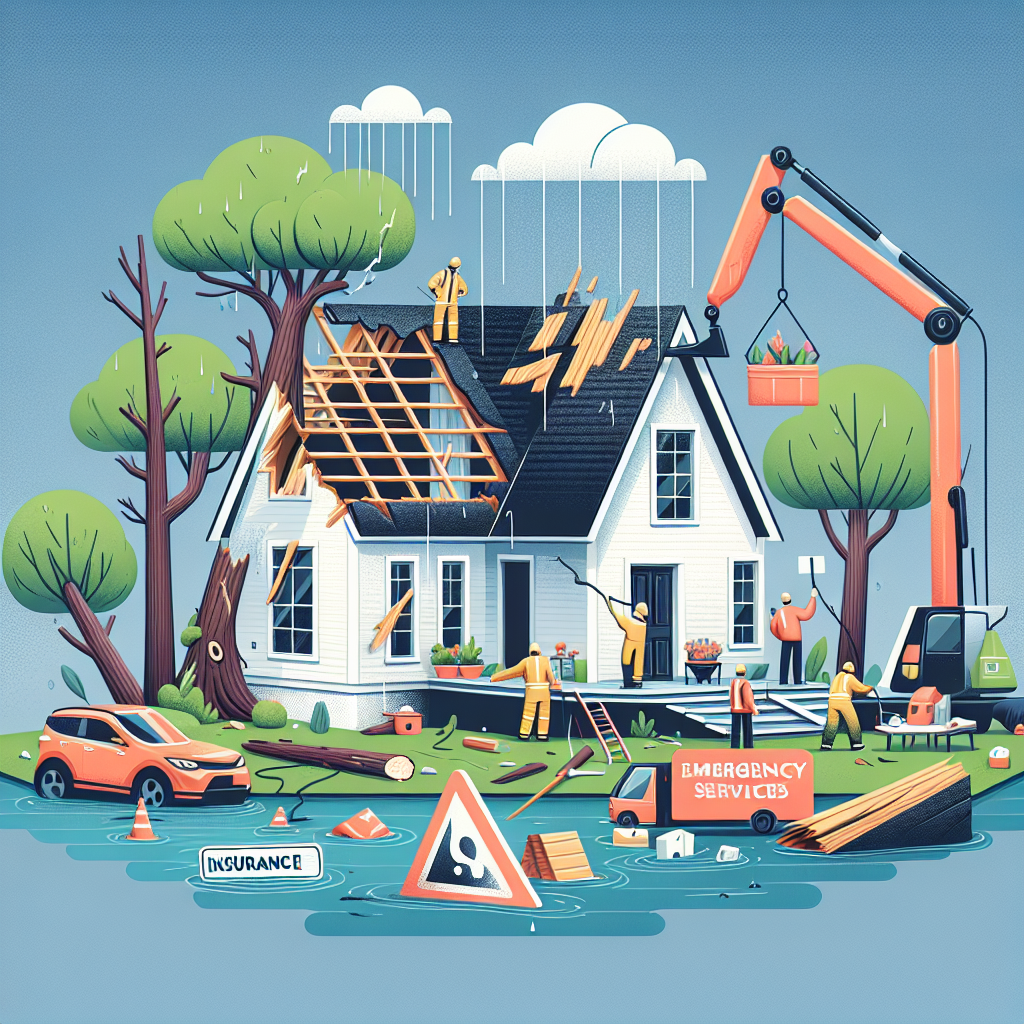Filed under Home Insurance on
Homeowners Insurance: Emergency Services Coverage Guide

When it comes to protecting your home, homeowners insurance plays an indispensable role. One of the critical components that often get overlooked is emergency services coverage. Understanding how this aspect functions can save you from unwelcome surprises during a crisis. In this guide, we'll delve into the nuances of homeowners insurance, with a particular emphasis on emergency services coverage, to help you make informed decisions. This article explores what is covered, what isn't, and how you can optimize your insurance plan for maximum benefit.
What is Homeowners Insurance?
Homeowners insurance is a form of property insurance designed to cover losses and damages to an individual's residence, along with furnishings and other assets in the home. It also provides liability coverage against accidents in the home or on the property. However, it's important to note that homeowners insurance can vary significantly by policy provider and state regulations. Therefore, it's critical to thoroughly read your policy and understand what coverage is provided.
Understanding Emergency Services Coverage
Emergency services coverage relates to the assistance provided in urgent situations, ranging from a burst pipe flooding your basement to fire damage. This type of coverage is an integral part of most homeowners insurance policies, ensuring that immediate actions can be taken to prevent further damage. Key areas typically covered include fire department service charges, temporary housing, and emergency repairs. However, the specifics can vary, so it’s advisable to scrutinize the policy documents carefully.
Fire Department Service Charges
In the unfortunate event of a fire, many municipalities charge homeowners for the use of firefighting services. Emergency services coverage can help offset these costs, ensuring you're not burdened with unexpected expenses. Typically, this type of coverage will have a limit on the amount, so verifying the cap is crucial to avoid any shortfall during a claim.
Temporary Housing and Living Expenses
If a disaster makes your home uninhabitable, temporary housing expenses are often covered. This provision ensures you and your family have a place to stay and funds to cover other living expenses during the repair or rebuilding process. Known as Additional Living Expenses (ALE), this feature can be a lifesaver but also varies by policy limits and terms.
Emergency Repairs and Immediate Action
Emergency services coverage often includes provisions for immediate repairs to prevent further damage to your property. For example, if a severe storm breaks your windows, your policy may cover the costs for immediate boarding up or replacement. Quick action can prevent additional issues such as water infiltration or structural damage, making this coverage aspect highly valuable.
What Isn’t Covered?
While homeowners insurance emergency services coverage is comprehensive, it’s not all-inclusive. Some areas, such as damages resulting from natural disasters like earthquakes and floods, typically require additional coverage. Policies may also exclude specific events like wear and tear, intentional damage, or damage resulting from neglect.
- Natural Disasters: Earthquakes and floods usually necessitate separate policies or riders.
- General Maintenance: Regular wear and tear or maintenance issues are not covered.
- Deliberate Acts: Damages caused intentionally by the homeowner or negligence are typically excluded.
Optimizing Your Homeowners Insurance
To ensure your homeowners insurance is working optimally for you, there are a few strategies you can implement. First, consider bundling policies. Many insurance providers offer discounts for combining auto and homeowners insurance. Next, regularly review your policy limits; as property values increase, underinsurance can become an issue. Lastly, discuss with your insurer about specific riders for unique coverage needs like high-value assets or increased liability protection.
Review the Deductibles
Your deductible can significantly impact your premium rates and payout during a claim. Balancing a higher deductible can often lead to lower premiums, but ensure you have the financial readiness to handle the deductible amount when a claim arises, especially in the case of emergency services coverage needs.
Industry Trends and Expert Opinions
Recent trends in homeowners insurance indicate an increasing emphasis on personalization. With technology advancements, insurers are now offering more tailored solutions using data analytics for precise risk assessment. Experts suggest that homeowners should leverage this by opting for policies that are adaptable to their specific needs and local risks.
According to Jane Doe, a risk management consultant, "Homeowners should push for clarity in their policies. With the increasing unpredictability of weather patterns, having a clear understanding of what your emergency services coverage entails can provide peace of mind and financial protection."
Final Thoughts
Homeowners insurance with comprehensive emergency services coverage is an invaluable tool in safeguarding both your home and finances. By understanding the intricacies of what is covered and what isn't, you can tailor a policy that meets your unique needs. As the insurance landscape continues to evolve, staying informed and regularly updating your policy can help ensure uninterrupted protection.
If you have questions or concerns about your current homeowners insurance policy, consult with your insurance agent to refine your coverage. In times of crisis, having the right emergency services coverage can make all the difference.





